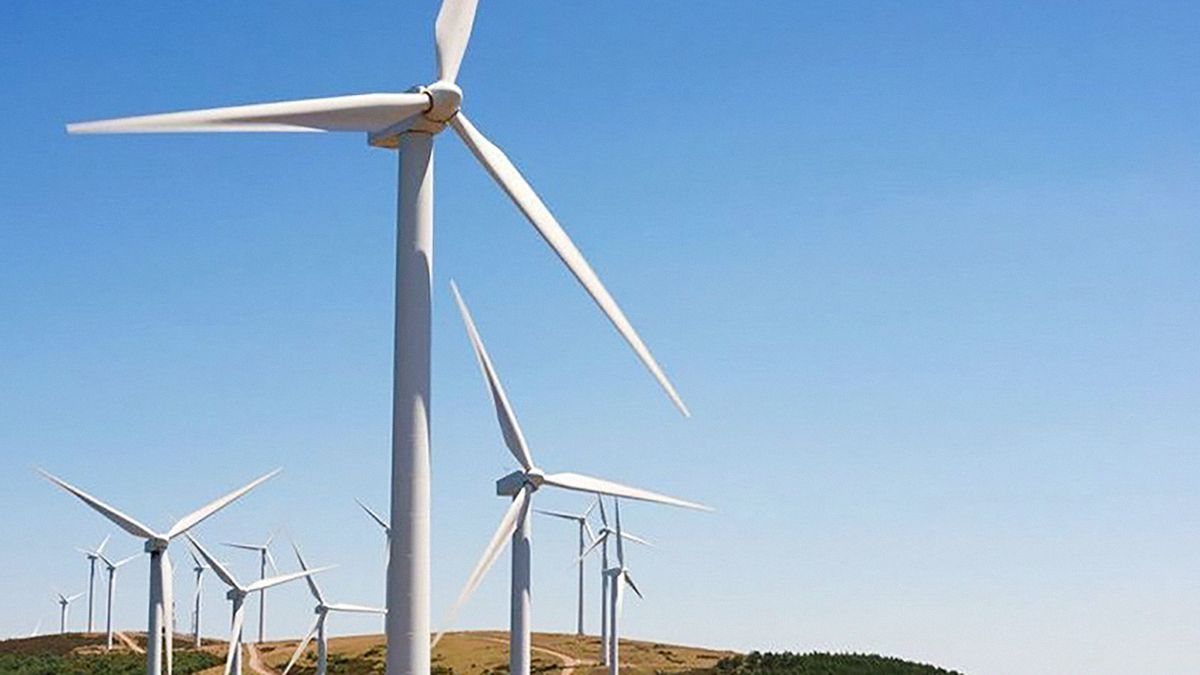After having to import energy during 2024, the energy transformation is bearing fruit from the increase in generation electric through renewable energy, a number that has continued to increase for four months and today stands at 97.9% of the total electricity generated in the Uruguay during the last twelve months.
According to the report of SEG Engineeringin the last twelve months 97.9% of the electricity generated in Uruguay came from renewable energy, a fact that could become good news for the Gross Domestic Product (GDP) of the country that during 2023 showed a loss in the energy field due to the need to import electricity from Argentina and Brazil.
According to the engineering company, this is the fourth consecutive month that the year-on-year participation of renewable energy thanks to the recovery of hydroelectric production, after the worst drought in 100 years that not only affected the agricultural sector but also the energy sector since more than 50% of electricity generation through hydraulics.
Embed – https://publish.twitter.com/oembed?url=https://twitter.com/SEGIngenieria/status/1775836226525790659&partner=&hide_thread=false
In the last twelve months, 97.7% of the electricity generated in Uruguay came from renewable sources.
Thanks to the recovery of hydroelectric production, the year-on-year share of renewables has increased for the fourth consecutive month
According to data from @UTE_ComCorp pic.twitter.com/sQSXX0JJyt
— SEG Engineering (@SEGIngenieria) April 4, 2024
A fierce drought that hit the energy sector
2023 was a complex year in terms of generation of renewable energy for the National Administration of State Electrical Power Plants and Transmissions (UTE)which also saw its operations directly affected by the drought and the water crisis that lowered the reservoirs of the hydroelectric dams.
This was reflected in the balance sheets of the state company that, despite having achieved a positive closing in terms of utilities, It reduced its profits by half compared to 2022.
As for the generation of energy itself, the effects were also observed. According to a report by SEG Engineering based on data from UTE, the hydropower production It was the lowest in 20 years, going from 4,184 GWh generated in 2022 to 3,431 GWh in 2023. That is, 18% less. This meant that, given the need for energy and the large consumption that occurred during the summer of last year, it had to be imported from Brazil and Argentina.
A historic month
In relation to the fourth consecutive month of increase in electricity generation, SEG also reported that during the month of March the production of electrical energy during the month of March was 99.97%, marking the record of the highest participation of renewable energies in a month since mid-2016.
The hydraulic energy was once again the undisputed protagonist in March, representing 50.1% of the electricity produced, a total of 508 GWh.
The wind It ranked second, covering 32.1% of the total with the production of 325 GWh. And they followed her biomass, with 14.1% with 143 GWh generated; the solar, with 38 GWh (3.7%); and finally the thermal, The remaining 0.3% being non-renewable energy and generating 0.4 GWh.
Embed – https://publish.twitter.com/oembed?url=https://twitter.com/SEGIngenieria/status/1775462244622442887&partner=&hide_thread=false
In March, Uruguay achieved 99.97% renewable electricity generation.
This record marks the largest share of renewable energy in a month since mid-2016.
According to data from @UTE_ComCorp. pic.twitter.com/uRiuFrFGqL
— SEG Engineering (@SEGIngenieria) April 3, 2024
The accelerator in the energy transition
In relation to what is published by SEG and in view of the hope that the production of renewable electrical energy will contribute to the Uruguayan economy this year, the president of UTE, Silvia Emaldi, assured that her sights are set on the investment of photovoltaic energy for the remaining year.
“There is a lot of installation of wind power In the country, approximately today about 1,500 megawatts and less of solar is in the order of 250,000 and both renewable sources complement each other very well. This makes wind generation more competitive,” explained the leader in dialogue with Ámbito.
In that sense, he assured that UTE’s plans are to expand this type of energy source. “According to our expansion plans, starting in 2026 we will incorporate photovoltaic solar energy. For that we will soon be publishing the call for a twenty-five megawatt solar park that will be done in Tiger Point within the framework of the increase in more renewable energy and later another 75 megawatts,” he explained.
Source: Ambito




